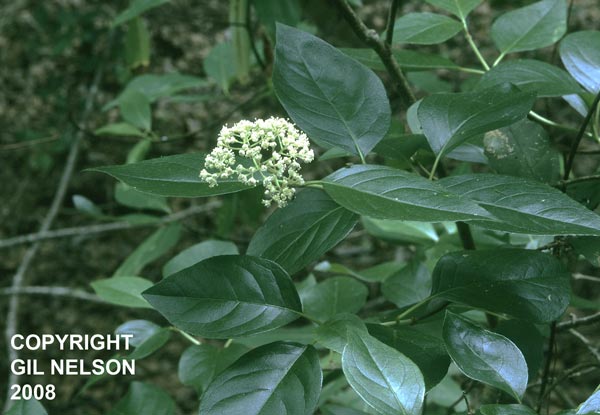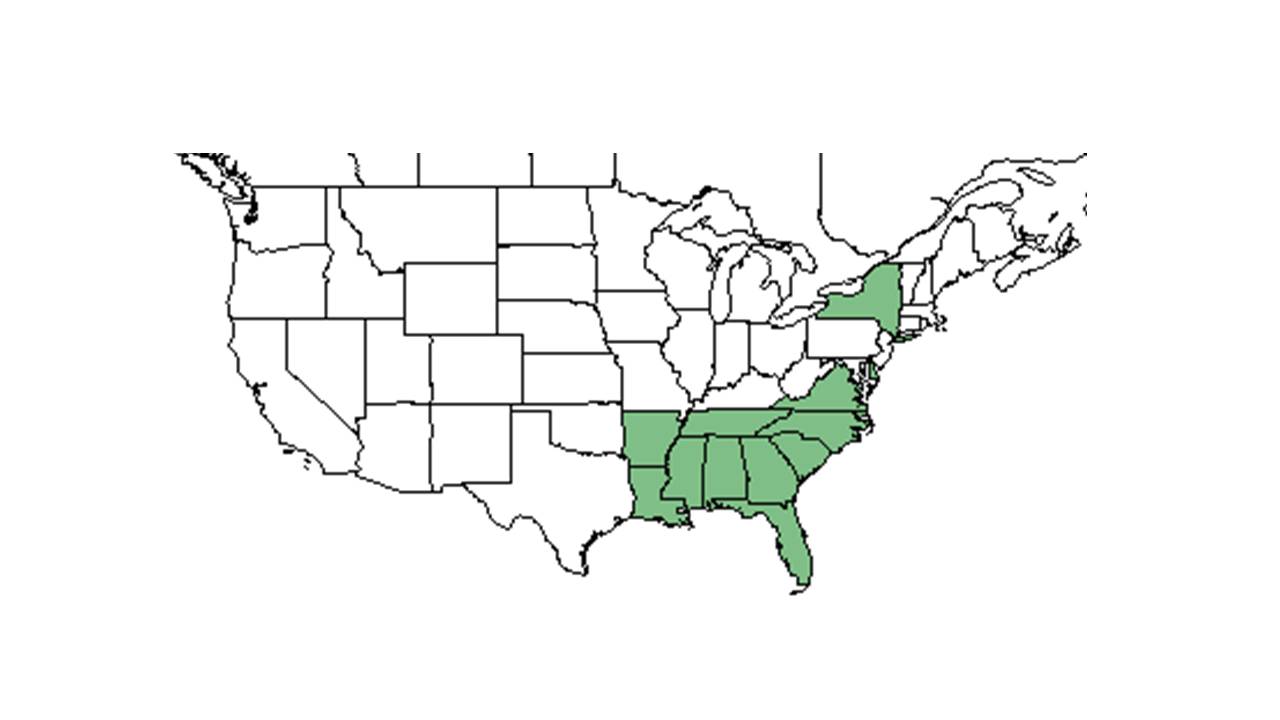Decumaria barbara
| Decumaria barbara | |
|---|---|

| |
| Photo taken by Gil Nelson | |
| Scientific classification | |
| Kingdom: | Plantae |
| Division: | Magnoliophyta - Flowering plants |
| Class: | Magnoliopsida – Dicotyledons |
| Order: | Rosales |
| Family: | Hydrangeaceae |
| Genus: | Decumaria |
| Species: | D. barbara |
| Binomial name | |
| Decumaria barbara L. | |

| |
| Natural range of Decumaria barbara from USDA NRCS Plants Database. | |
Common names: woodvamp, climbing hydrangea, decumary, cowitch vine
Contents
Taxonomic notes
Synonyms: Hydrangea barbara (Linnaeus) B. Schulz[1]
Varieties: none[1]
Description
It has a vining and climbing habit.[2]
"High-climbing, woody vine with adventitious, aerial roots. Leaves opposite, ovate, elliptic, or obovate, 3-12 cm long, 1-7 cm wide, glabrous above, pubescent beneath, at least n the veins, acute or acuminate, entire to coarsely serrate, base cuneate to cordate, petiolate. Corymbs terminal, 4-10 cm broad; flowers numerous, perfect, regular, bracteates, short-pedicellate. Calyx tube 7-10 cm ribbed, turbinate, ca. 1.5 mm long in anthesis, 3.5-4 mm long in fruit, lobes 7-10, persistent, 0.2-1 mm long; petals 7-10, white; stamens numerous; carpels 7-10, stigma capitate with 7-10 lobes, style solitary, thick, ca. 1 mm long, ovary inferior, 7-10 locular, many-ovulate, placentation parietal. Capsules turbinate or obovoid, conspicuously longitudinally ribbed, 4-5 mm long; seeds lustrous, yellow, linear-terete, ca. 2 mm long."[3]
Distribution
Ecology
Habitat
It is found in in swampy woods, along banks and streams, in floodplains, in mesic woodlands, slopes of ravines, and seen climbing on a tree trunk. It requires low light levels. It is associated with drying sandy loam soil types.[2]
Associated species includes Acer, Carpinus, Fraxinus, Nyssa, Quercus, Taxodium.[2]
Phenology
Flowers are white, bisexual and radially symmetrical.[4] It has been observed flowering in April and May and seen fruiting in May.[2][5]Fruit capsules are urn-shaped and tan.[6]
Conservation, cultivation, and restoration
Cultural use
Photo Gallery
References and notes
- ↑ 1.0 1.1 Weakley, A.S. 2020. Flora of the Southeastern United States. Edition of 20 October 2020. University of North Carolina at Chapel Hill, Chapel Hill, North Carolina.
- ↑ 2.0 2.1 2.2 2.3 Florida State University Robert K. Godfrey Herbarium database. URL: http://herbarium.bio.fsu.edu. Last accessed: June 2014. Collectors: Loran C. Anderson, Rodie White, Robert K. Godfrey, Travis MacClendon, Karen MacClendon, and Kathy Willis. States and Counties: Florida: Calhoun, Gadsden, Jackson, Liberty, and Wakulla. Georgia: Grady.
- ↑ Radford, Albert E., Harry E. Ahles, and C. Ritchie Bell. Manual of the Vascular Flora of the Carolinas. 1964, 1968. The University of North Carolina Press. 520. Print.
- ↑ [[1]]Accessed: April 17, 2016
- ↑ Nelson, G. PanFlora: Plant data for the eastern United States with emphasis on the Southeastern Coastal Plains, Florida, and the Florida Panhandle. www.gilnelson.com/PanFlora/ Accessed: 19 MAY 2021
- ↑ [[2]]Lady Bird Johnson Wildflower Center. Accessed: April 16, 2016